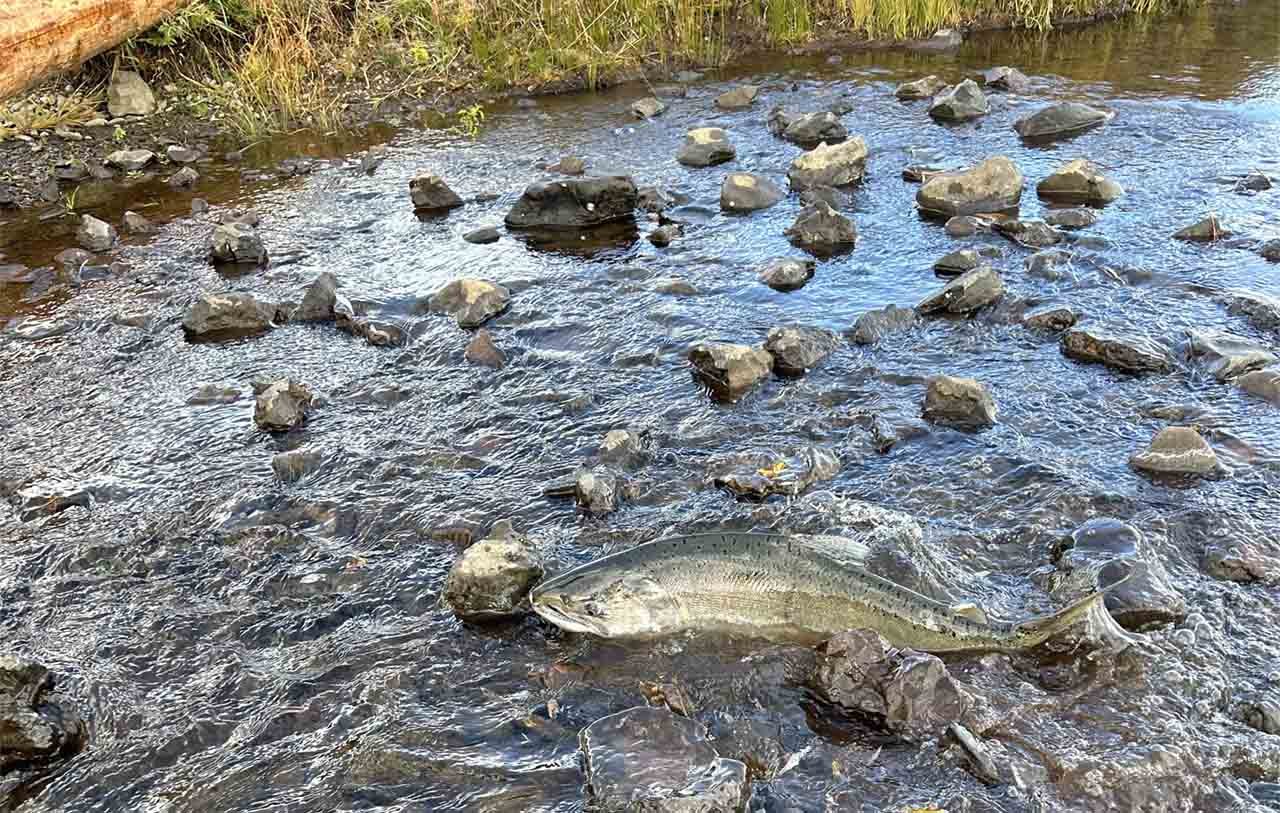Researchers Track Increased Klamath River Salmon Spawning After Dams Dismantled

KLAMATH COUNTY, Ore. — Within days of the final dismantling of the Klamath River Dams, Chinook salmon were seen in California Siskiyou County’s Jenny Creek- above all four former dams, on October 16.
Biologists have noted that the salmon are now spawning in waters they haven’t been in for 100 years and a collaboration between tribes, researchers, agencies, and conservation groups is now tracking the fish in their new environment.
See also: Klamath Dam Salmon To Swim Freely For First Time In 100 Years
Salmon Spawning Above Former Dams In Klamath River Tributary
The California Department of Fish and Wildlife (CDFW) has conducted spawning surveys in the Klamath river and some tributaries.
The agency installed “video weirs” in key areas to capture images 24/7. 27 female fish spawned at the hatchery at Fall Creek that was relocated from the Iron Gate dam and over 100 Chinook were seen in Jenny Creek.
Although returns to the relocated hatchery have been slow, Morgan Knechtle, an environmental scientist at the California Department of Fish and Wildlife, said, “The fish appear to be in very good condition; they are very bright for this time of year, very silver.”
The Oregon Department of Fish and Wildlife (ODFW) is also conducting spawning surveys and has counted dozens of fish and nests above and below the former J.C. Boyle dam and over 100 fish and 42 nests in Spencer Creek.
To prepare the environment for the spawn, some of the tributaries submerged for decades by the dams have been partially restored by for example, placing logs with root balls still attached across streams to create a suitable habitat for spawning.
Several regional tribes are working with Resource Environmental Solutions, a Houston ecological restoration company, to continue revegetating the former dams.
A comparison between this years salmon run with previous seasons has not been established yet but the Chinook that have their way above the former dams are probably a combination of wild and hatchery-bred fish.
Klamath River Tributaries Fish Ladders Research
The fish ladders in the Keno and Link River dams in Oregon above the four dismantled dams have some concerns, as the holes that allow fish to move up the ladder are too small for large fish.
Adult Chinook are too big to fit through the holes, although adult Redband trout can pass through the fish ladder.
No fish have so far been spotted above the Keno dam but the ODFW recently got $1.9 million from NOAA for a feasibility study on improving fish passage at this dam.
Researchers Tagging Klamath River Salmon Spawning In New Areas
The speed of the salmon’s return has sparked action as interested parties get teams and protocols in place. Barry McCovey, senior fisheries biologist for the Yurok Tribe, confirmed that the more information gathered about how fish are using these new spaces, the better.
By helping to estimate the size of this year’s runs and predict future runs, the management of tribal, commercial, and recreational fisheries will be better informed.
The conservation group, California Trout installed a sonar monitoring station immediately upstream of the former Iron Gate dam to act as a fish finder.
The groups regional director, Damon Goodman,confirmed that the station generates radio waves that can detect fish that pass, even through even very turbid water. By tagging salmon with radio tags and passive integrated transponders (PIT tags), the fish can be tracked in their new habitat upstream.
The mine of information gleaned will help inform future dam removals on other rivers. The collaboration will soon also turn their attention to steelhead and threatened coho salmon that return to the Klamath to spawn, and juvenile fish making their way to the ocean.
